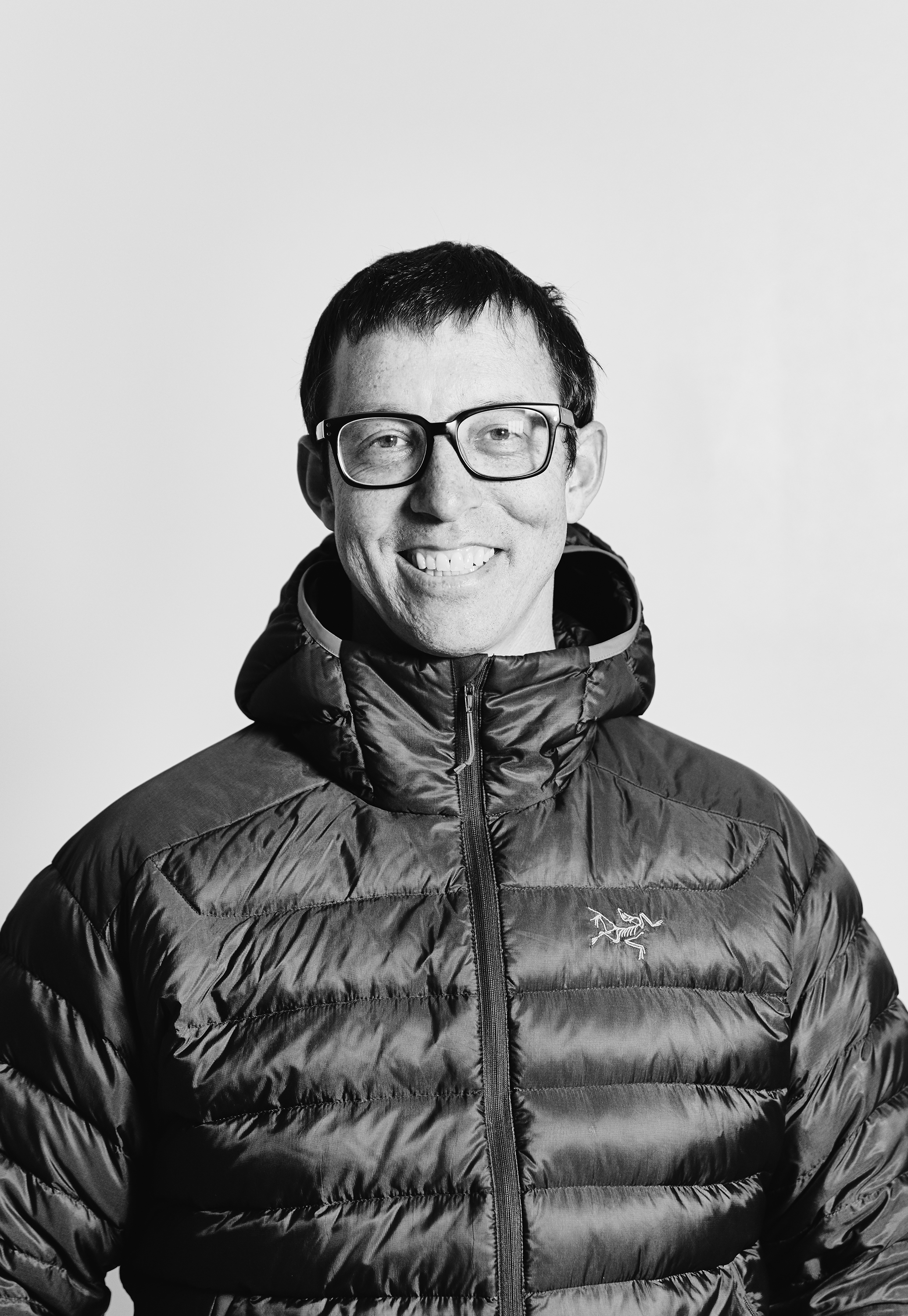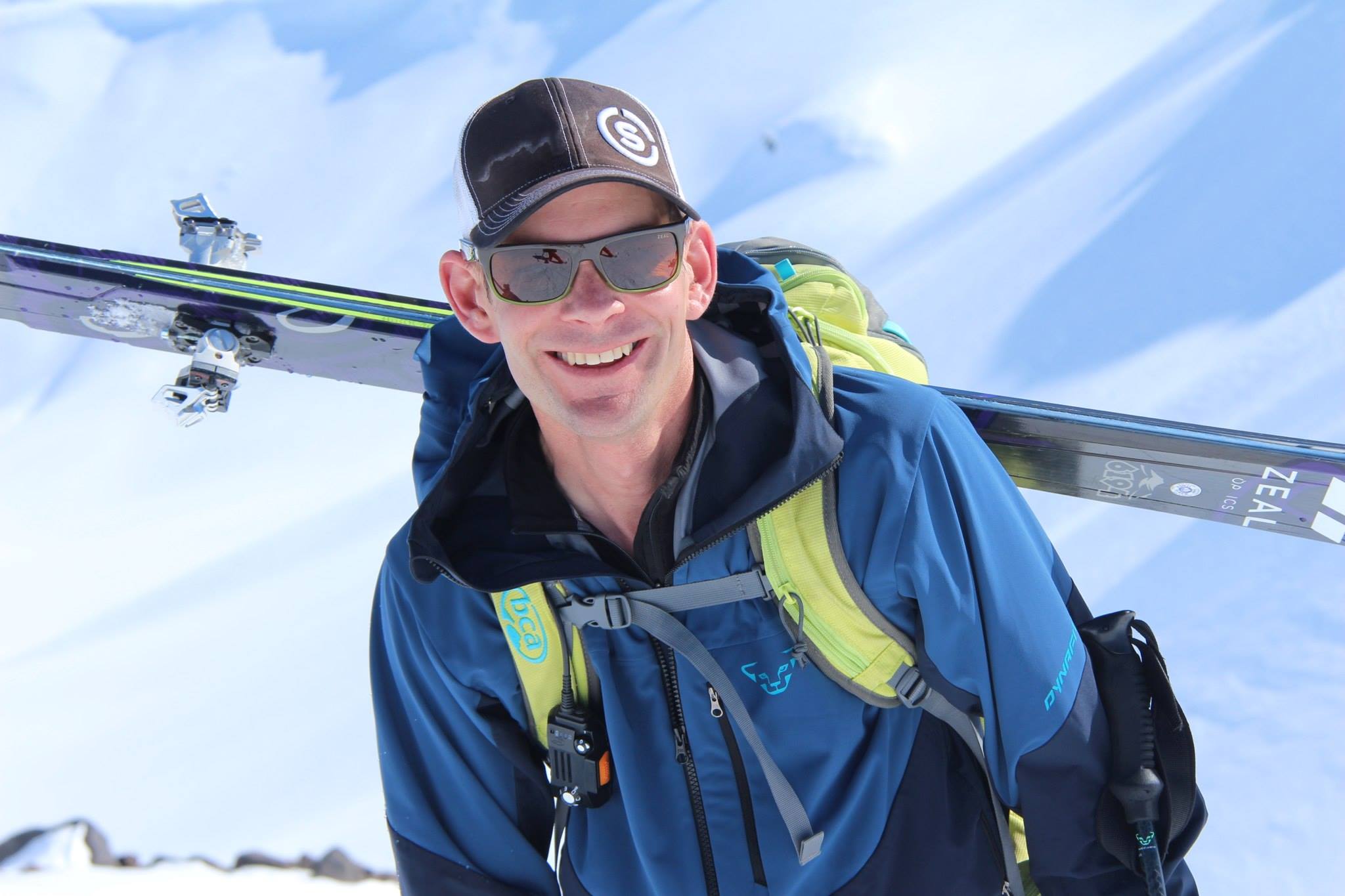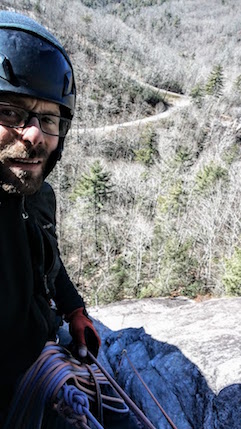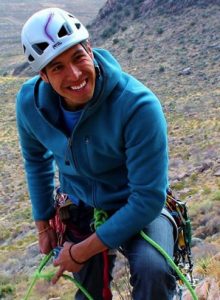On Becoming a Better Guide: 5 reasons to take an AMGA Alpine Course
By Emilie Drinkwater, the 2012 Patagonia Woman’s Scholarship recipient
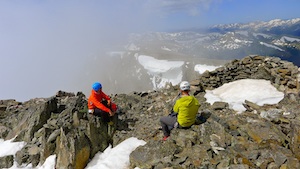 Two winters ago I found myself slightly off-route and desperately run-out on a rime covered rock face not far below the summit of New Hampshire’s Mt. Washington. I glanced down at my two clients, huddled together while wind and icy sleet pellets blasted them from above. They looked miserable. The terrain above looked easier so I tentatively kept going. Then I ran out of rope with no anchor in sight. Minutes ticked by, the wind blew harder, I wandered up and down searching in vain for something, anything, to anchor to. Eventually, I settled for a cluster of shrubby branches equalized to my ice ax. This would have to do. Yet all I could think, all I had been thinking all day was: there has to be a better way.
Two winters ago I found myself slightly off-route and desperately run-out on a rime covered rock face not far below the summit of New Hampshire’s Mt. Washington. I glanced down at my two clients, huddled together while wind and icy sleet pellets blasted them from above. They looked miserable. The terrain above looked easier so I tentatively kept going. Then I ran out of rope with no anchor in sight. Minutes ticked by, the wind blew harder, I wandered up and down searching in vain for something, anything, to anchor to. Eventually, I settled for a cluster of shrubby branches equalized to my ice ax. This would have to do. Yet all I could think, all I had been thinking all day was: there has to be a better way.
In June, thanks largely in part to the Patagonia Women’s Scholarship, I headed to Colorado to take the American Mountain Guide Association’s Alpine Guide Course. I should have taken it years ago, but had been spending most of my time and money on personal climbing ventures. Experience and mileage are pivotal, adding necessary depth to a guide’s fundamental skills, but the value, insight, and professional development gained from taking this course was a missing link in my vocation. While I’m pretty sure there are more than five reasons to take a course, and I’m definitely sure there are more than five things to be learned, here is what I came away with:
American Mountain Guide Association’s Alpine Guide Course. I should have taken it years ago, but had been spending most of my time and money on personal climbing ventures. Experience and mileage are pivotal, adding necessary depth to a guide’s fundamental skills, but the value, insight, and professional development gained from taking this course was a missing link in my vocation. While I’m pretty sure there are more than five reasons to take a course, and I’m definitely sure there are more than five things to be learned, here is what I came away with:
- Someone who knows what they’re doing will tell you what to do. Sometimes when I’m out guiding I’m confronted by an uncertain situation (e.g. should I really be short-roping this guy who out-weighs me by 100 pounds? Or, I don’t recognize where I am at all–should I just keep going?). These are the times when I wish I had someone to tell me what to do, or rather, what I could do. And this is the advantage of a course. Not only do you get to see what your fellow participants would do, but a good instructor can give you instant feedback, hints, suggestions on better ways of doing things, and even take over if you and your partner are moving too slowly and a huge thunderstorm rolls in (yes, this really happened).
- Good judgement is based on experience. Applying judgement results in more experience. For me, decision making and intuition are often the same thing. However, neither are easy to access without knowledge, practice, and a wealth of experience to draw upon. In addition to technical skills, the alpine course was a great opportunity to commit and test the outcome of my decisions (right, sort of right, or completely wrong) in the mountains. Alpine guides have to stay on top of many variables – navigation, route finding, weather and objective hazards–all while tending to the overall reward of the experience for their guests. Watching fellow candidates consider and complete an important decision was an insightful process. A good decision will yield a positive outcome, and a poor decision should lead to correction. Figuring this all out is far more enjoyable when someone is there to coach you through this often trial and error process.
- Seeing the big picture (topographically). In the mountains, my eye is always drawn to those beautiful ribbons of ice that thread their way up through a sea of dark rock. But in Colorado, in June, after a light snow year, the best route to the top of something usually meant following a rocky ridgeline or corner system, looking for the path of least resistance and least hazard. Seeing the big picture in alpine terrain, and learning to integrate information from Google Earth, topo maps, guidebooks and simple gut instinct to find your way up and down a big mountain, is an equally valuable skill in all disciplines.
- Efficiency is safety. Thunderstorms, rock fall, avalanches. These are all prevalent in the mountains. Though not entirely avoidable, learning to minimize your exposure to these hazards means learning to climb and guide as efficiently as possible. It was eye opening to decide that a guide might not always use the rope. In the right places, at the right times, and with the right clients–it might be faster, more efficient and therefore safer–to model, coach, and spot guests through third or fourth class terrain, rather than rely on the rope and the need to manage it.
- Gain confidence engaging the unknown. What I love most about alpine climbing is that element of the unknown… and the varying possibility of success or failure. But alpine guiding is a little different; it requires a balance between engaging a succession of unknown or unpredictable factors with the application of a deep contextual knowledge of learned hard skills. Failure is a less favorable outcome when you’re being paid to succeed, so learning to be comfortable with uncertainty is a very valuable soft skill. By no means have I perfected any of this, but one of the biggest things I gained from this course is a level of confidence that has taught me to trust in my ever-expanding toolbox of skills, instincts, and experience.
As for that climb of Mt. Washington several years ago, it really wasn’t so dramatic after all; we finished the climb and made it to treeline before the weather really shut down. But looking back I realize that, had I known then what I know now, it could have been a very different day. Live and learn.
A big thanks to the AMGA and Patagonia for helping me become a better mountain guide!





